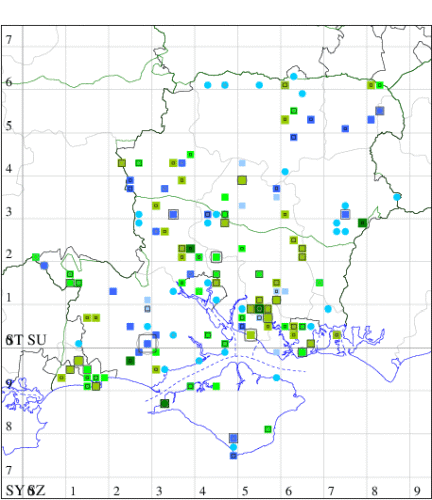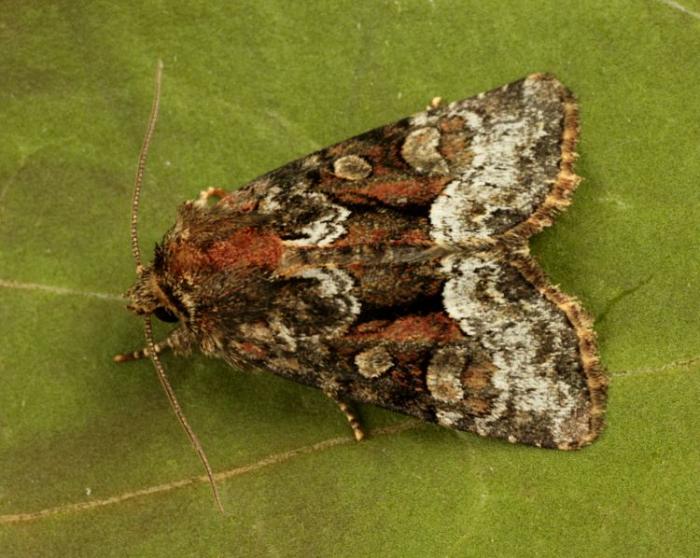Rufous Minor
Oligia versicolor
Checklist Number73.175 [B&F: 2338]
Verification
Record requires retention of specimen until confirmed, and may require dissection. Consult with CMR if unsure
Local in woodland, heathland, sea cliffs and gardens throughout much of southern England and Wales. In Hampshire and on the Isle of Wight this appears to be the least common of the three similar Oligia species, although it is undoubtedly under-recorded; even so, it does seem to have increased in the last 25 years and is evidently the commonest species by far in Bentley Wood. Wingspan 23-28 mm. Marbled Minor O. strigilis, Rufous Minor O. versicolor and Tawny Marbled Minor O. latruncula, especially their melanic forms, can only reliably be separated by dissection of the genitalia. Typical examples of Rufous Minor have reniform stigma larger, fuller and rounder than in the other species, and often conspicuously pale against the dark median shade, and it may possible with experience to assign well-marked individuals to Rufous Minor at a particular site once the observer is familiar with the forms present in that area. Larva feeds on various grasses.


The abundance in each month is indicated as follows:
 No records
No records Very occasional
Very occasional Irregular
Irregular Uncommon
Uncommon Off-peak, but not unusual
Off-peak, but not unusual Off-peak, but not unusual
Off-peak, but not unusual Main flight time
Main flight time| J | F | M | A | M | J | J | A | S | O | N | D | |
|---|---|---|---|---|---|---|---|---|---|---|---|---|
| Adult |  |  |  |  |  |  |  |  |  |  |  |  |
| Larval |  |  |  |  |  |  |  |  |  |  |  |  |



